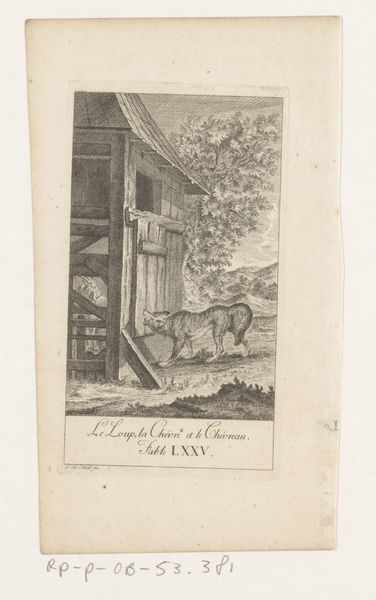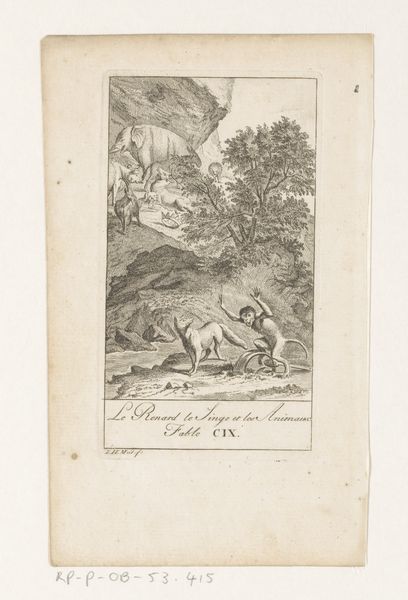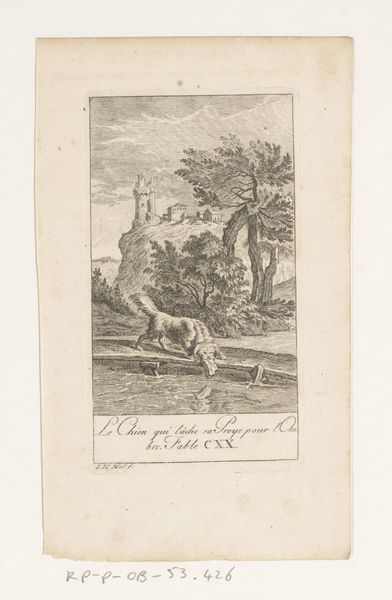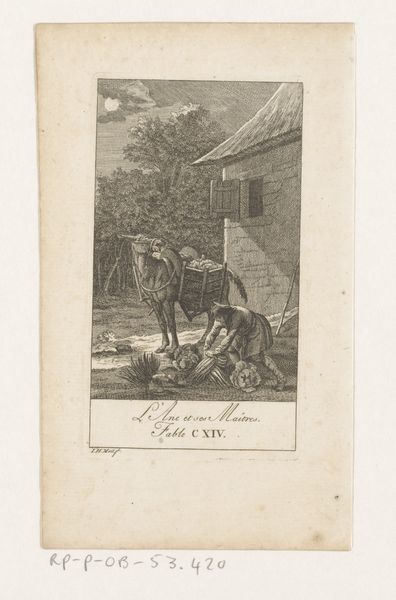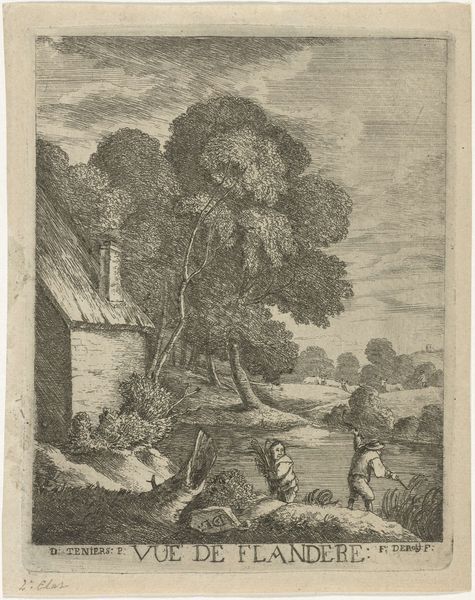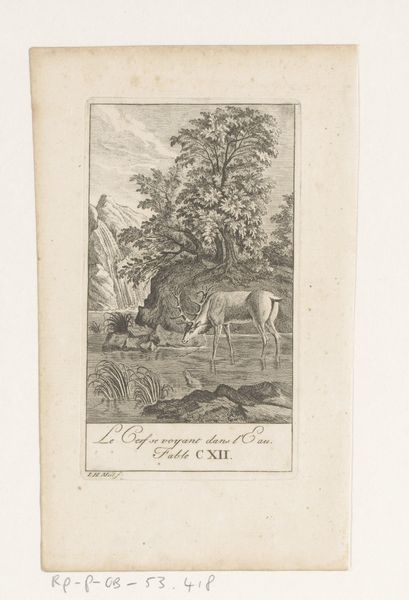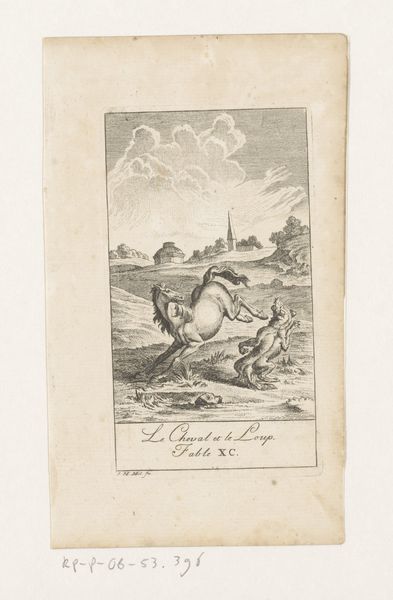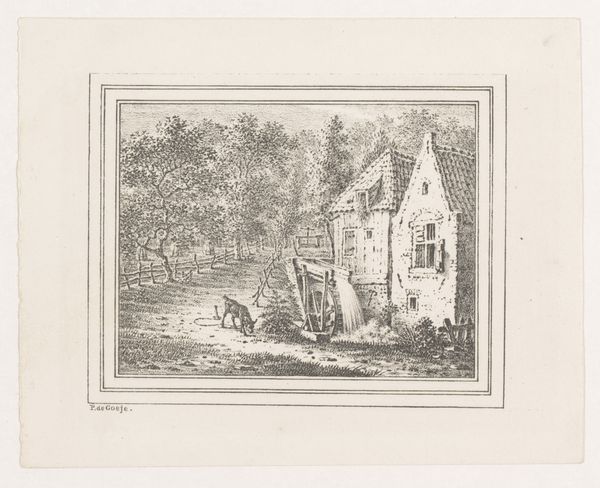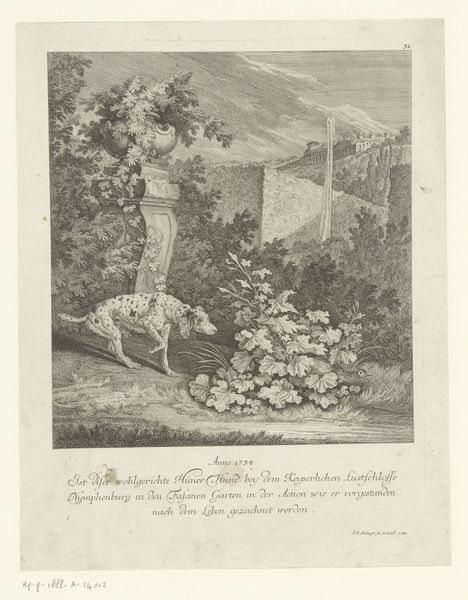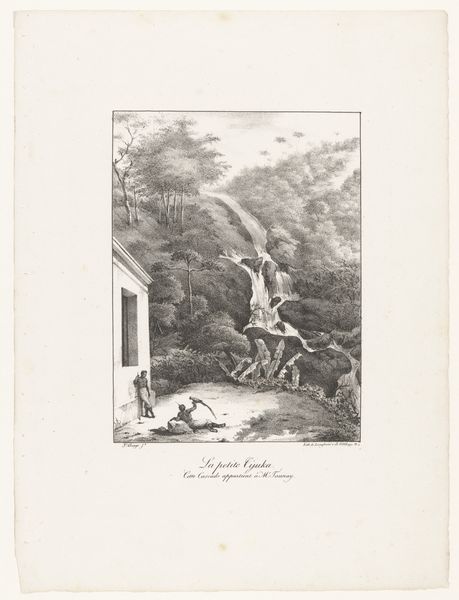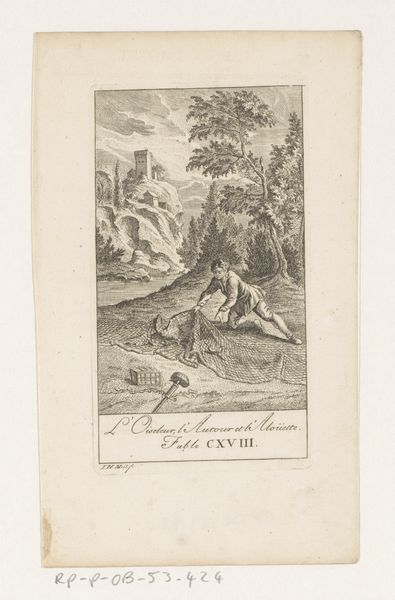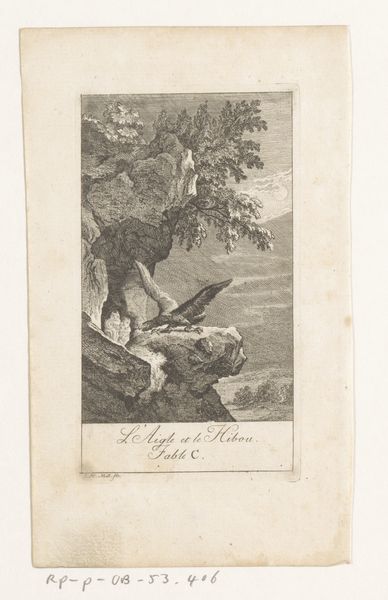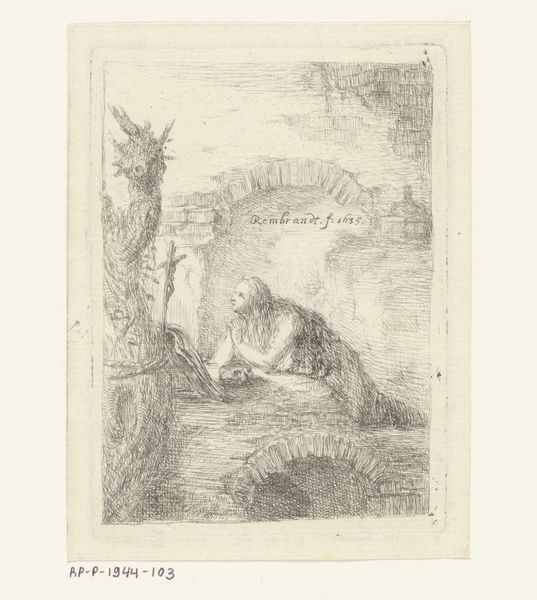
print, engraving
#
baroque
# print
#
old engraving style
#
landscape
#
figuration
#
line
#
engraving
Dimensions: height 142 mm, width 81 mm
Copyright: Rijks Museum: Open Domain
This print, “Fable of the mule boasting of his origins,” was made by Johann Heinrich Meil the elder, likely in the late 18th century. It's an etching, a printmaking process that uses acid to create lines in a metal plate, which is then inked and pressed onto paper. Look closely at the image. The fineness of the lines speaks to Meil's mastery of the etching technique. He’s using it here to illustrate a pointed social commentary. Mules, being hybrid animals, are famously sterile – a metaphor for the futility of social climbing. The landscape in the background, with its prominent windmill, hints at the economic realities of the time. Windmills were crucial for grinding grain, and this alludes to the labor and industry that underpins society. The mule's vanity is thus set against the backdrop of real work and productivity. Meil, in this small print, is inviting us to consider the material basis of social status.
Comments
No comments
Be the first to comment and join the conversation on the ultimate creative platform.
